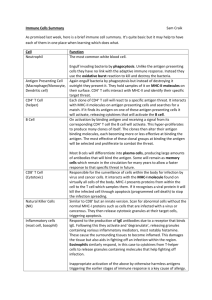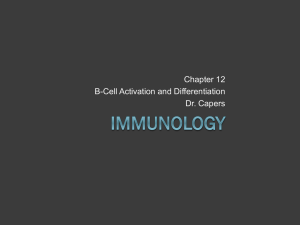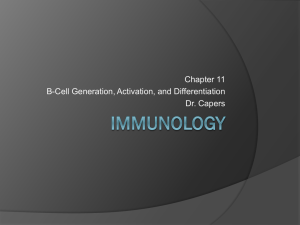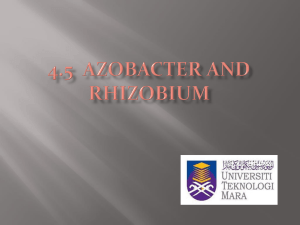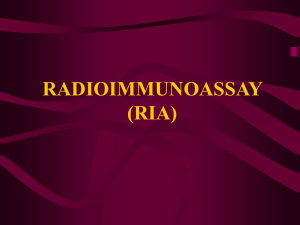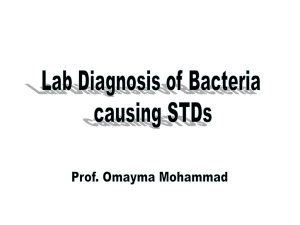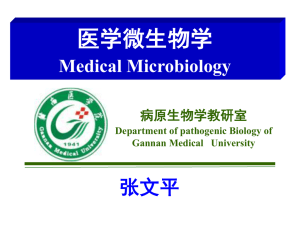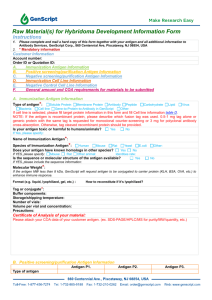Sweta
advertisement
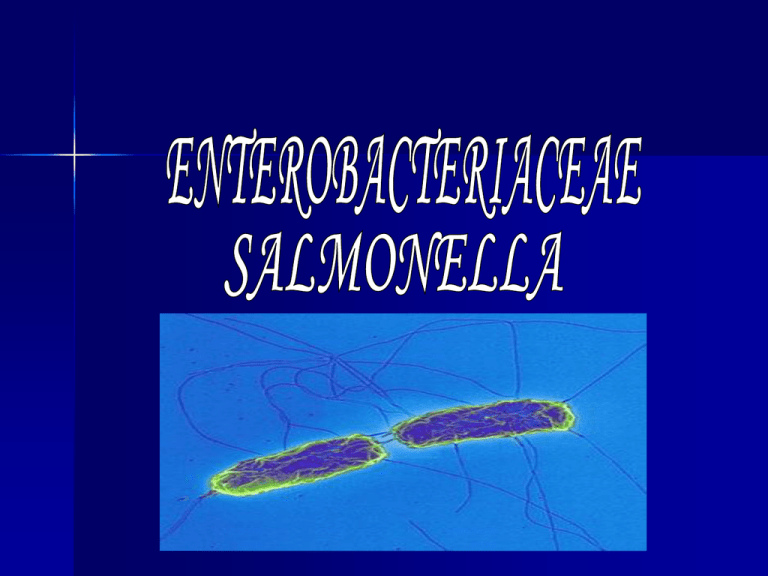
INTRODUCTION • The genus salmonella consists of bacilli that parasitise the intestines of a large of vertebrate sp and infect human beings leading to enteric fever, gastroenteritis, septicemia • The most important member of genus is salmonella typhi the causative agent of typhoid fever. • 2000 serotypes or species. • For practical purpose they may be divided into 2 groups: The enteric fever group. 2. The food poisoning group. 1. MORPHOLOGY • • • • • Gram-negative rods Peritrichate flagella Non capsulated Non sporing Fimbriated CULTURAL CHARACTERS • Aerobic and facultatively anerobic NUTRIENT AGAR:- Large, circular low convex and smooth. MACCONKEY AGAR:- Non lactose fermentor. WILSON & BLAIR BISMUTH SULPHITE MEDIUM:- jet black colonies with a metallic sheen are formed due to production of H2S. BLOOD AGAR Mac CONKEY AGAR WILSON BLAIR AGAR XYLOSE-LYSINE-DEOXYCHOLATE (XLD) AGAR BIOCHEMICAL REACTIONS • • • • • • • Ferment glucose, mannitol, maltose forming acid and gas. Lactose ,sucrose and salicin are not fermented. Indole-negative MR-positive VP-Negative Citrate-positive Urease-negative INDOLE MR VP CITRATE RESISTANCE • • • Killed at 55˚C in one hour. Boiling or chlorination of water and pasteurisation of milk destroy the bacilli. There are killed within 5 mins by mercuric chloride or 5 % phenol. ANTIGENIC STURCTURE • Three antigens are identified:- 1. Flagellar antigen H 2. Somatic antigen O 3. Surface antigen Vi H ANTIGEN • • • • Heat labile protein Strongly immunogenic When mixed with antisera H suspensions agglutinate rapidly producing large, loose, fluffy clumps Dual in nature O ANTIGEN • • • • • Phospholipid-protien-polysaccharide complex Identical with endotoxin Unaffected by boiling When mixed with antisera O antigen suspensions form compact, chalky, granular clumps Less immunogenic VI ANTIGEN • • • • Heat labile Many strains fails to agglutinate with the O antiserum, due to the presence of a surface polysaccharide antigen Acts as a virulence factor by inhibiting phagocytosis Poorly immunogenic ANTIGENIC VARIATIONS • • H-O VARIATIONS:- These variations is associated with the loss of flagella When salmonella are grown on the agar containing phenol, flagella inhibited Flagella reappears when the strain is sub cultured on the media without phenol INOCULATION SUBCULTURE PHASE VARIATION:• • • Phase1 antigen are either specific for a species or shared by a few species only so called as specific phase. Designated as a,b,c….z, z1 etc Phase2 antigen are widely shared and hence also called as non specific or group phase. Designated as 1,2,…. Stains that possess both phases are called diphasic V-W variations:- V form • W form • VW form S-R variations :- The smooth to rough variation is associated with the change in the colony morphology and loss of O antigen • CLASSFICATION & NOMENCLATUREKAUFFMANN-WHITE SCHEME SERO SEROTYPE GROUPS ANTIGEN O ANTIGEN H 2-A S paratyphi A 4-B S paratyphi B 1,4,5,12 S typhimurium 1,4,5,12 S Chester 4,5,12 b i e, h 1,2 1,2 e,n,x S paratyphi C 6,7(Vi) S cholerae-suis 6,7 c C 1,5 1,5 7-C1 1,2,12 Phase 1 Phase 2 a - 8-C2 S muenchen 9-D S typhi 9,12(Vi) S enteritidis 1,9,12 S gallinarum 1,9,12 10-E1 S anatum 6,8 3,10 d 1,2 d g, m - - e, h 1,6 SALMONELLA GASTROENTERITIS:- Also called food poisoning group. Most common S typhimurium.Others S enteritidis, S haldar, S newport etc SALMONELLA SEPTICEMIA:• S choleraesuis FOOD POISONING



